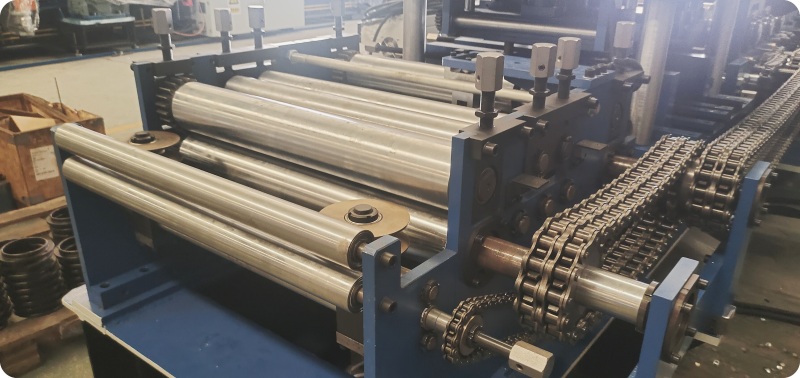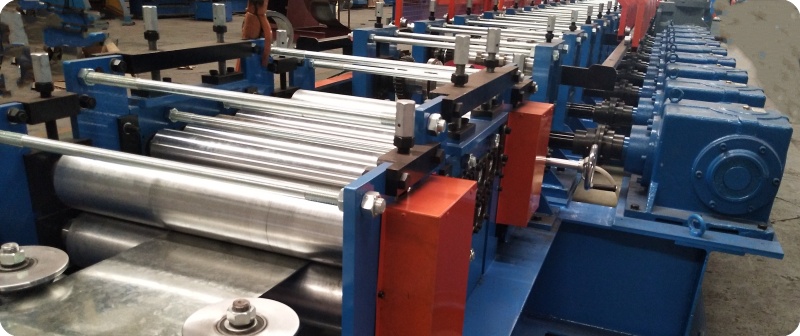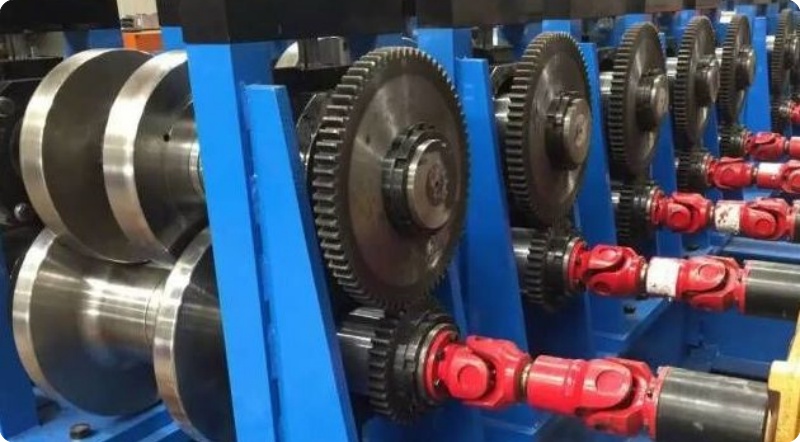 +86 15959271231
+86 15959271231 sophie@cnrollforming.com
sophie@cnrollforming.com


 +86 15959271231
+86 15959271231 sophie@cnrollforming.com
sophie@cnrollforming.com


When embarking on the quest to acquire roll forming machinery, it's imperative to possess a nuanced understanding of their transmission mechanisms. Roll forming setups are a symphony of parts, including decoilers, feeders, levelers, punchers, roll formers, cutters, hydraulics, controls, and crucially, the transmission system. Drawing from years of industry immersion, this discussion highlights the three primary transmission methods in roll forming, each with its own unique advantages.
First up, the chain sprocket transmission is a reliable workhorse in the realm of roll forming, particularly for thinner gauges of metal (under 3mm). It's a familiar sight in corrugated sheet, C/Z purlin, and stud and track roll formers. The chain sprocket mechanism is noted for its ruggedness, capable of withstanding dusty industrial settings without skipping a beat. However, prolonged use can lead to wear, making it less suited for tasks demanding meticulous tolerances.
Chain Sprocket Transmission Advantages
- Affordable initial investment
- Tolerant of harsh conditions
- Versatile application across different machine types

For thicker materials (above 3mm) or operations exceeding speeds of 20m/min (approximately 80ft/min), gearboxes paired with universal joint shafts take center stage. These heavyweights are staples in highway guardrail and high-precision roll formers. They deliver the muscle and precision necessary for high-velocity, pinpoint accuracy jobs. Yet, their formidable nature comes with a higher price point and necessitates a pristine, dust-free atmosphere. Moreover, they occupy more floor space compared to their counterparts.
Gearbox Transmission Advantages
- Substantial torque
- Steadfast precision
- Ideal for demanding, high-speed applications

Then there's the worm-gear transmission, a niche player best suited for lighter, thinner materials processed at moderate speeds (below 15m/min or roughly 50ft/min). Occasionally specified for roof panel roll formers, it offers a compromise between the bulk of gearboxes and the simplicity of chain sprockets. Worm gears are lighter, contribute to stable machine operation, and sit comfortably in terms of cost between chain sprockets and gearboxes. They're a pragmatic choice for lightweight steel roll formers, balancing precision, reliability, affordability, and spatial efficiency.
Worm-gear Transmission Advantages
- Lightweight and compact
- Steady and accurate within its operational envelope
- Economical alternative to gearbox systems

Here at Xiamen Thrive, our extensive experience spans the design and manufacture of roll formers equipped with these transmission mechanisms. We engage closely with clients to tailor solutions that align seamlessly with their unique requirements. To witness the dynamism of our machinery in action, visit our YouTube page and explore our trial runs, a testament to our cutting-edge roll forming expertise.
In conclusion, selecting the appropriate transmission mechanism for your roll former is pivotal for optimizing performance, accuracy, and cost-effectiveness. By recognizing the inherent strengths and constraints of each type, you can make an informed choice that harmonizes with your production aspirations and budget constraints.